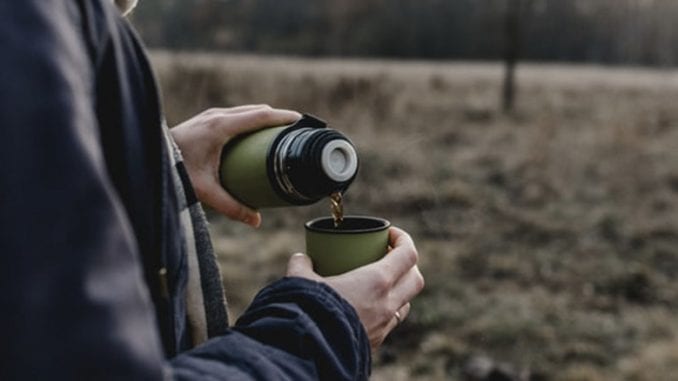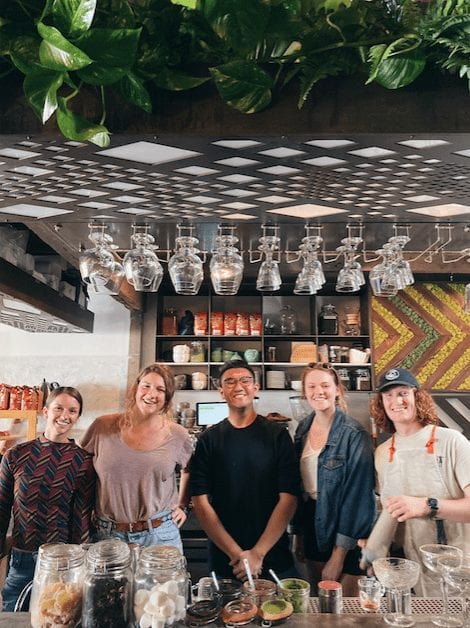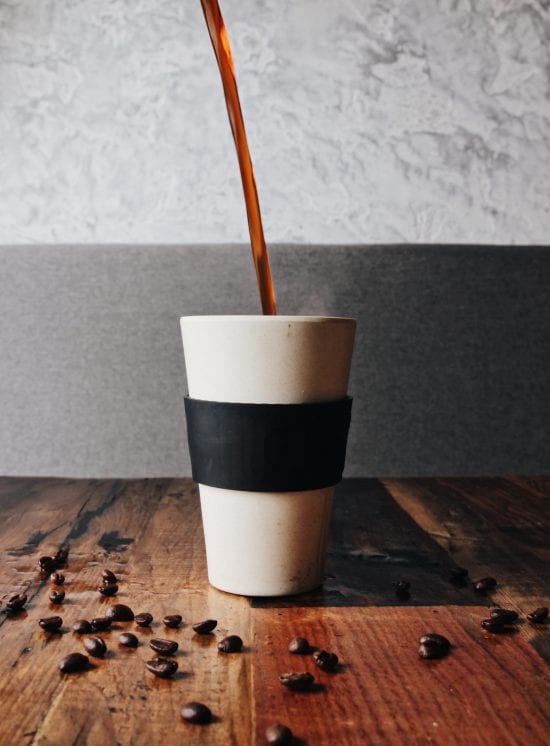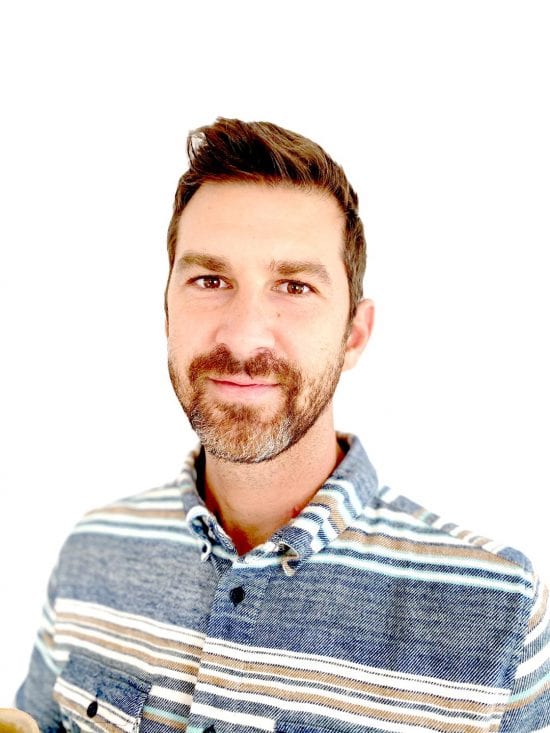
We explore four ways cafés can try doing away with single-use cups.
BY MARK VAN STREEFKERK
BARISTA MAGAZINE ONLINE
Cover photo by Kamil Szumotalski for Unsplash
Last month we listed six cafés with environmentally sustainable practices, and Caje Coffee was one of them. The Santa Barbara, Calif.-based company started their first location in Isla Vista in 2004. They opened their second Haley St. café last February, where they’ve eliminated single-use to-go cups altogether. “We opened not having (single-use to-go) cups and we’ll never have them,” says Caje Coffee owner Ryan Patronyk. “I want to show the example to everyone who’s trying to open coffee shops that it’s possible.”
For Ryan, choosing to eliminate single-use cups has its challenges, but it’s the ethical and environmentally responsible choice. Here are four ways cafés can consider embracing this trend.

1. Acknowledge the problem. It’s estimated that 600 billion coffee cups are thrown away each year. That’s 600 billion non-recyclable coffee cups going straight to landfills. Most people who sleepily grab their daily morning coffee at a café don’t think twice about their single-use habit, but Ryan couldn’t look away from the problem. Speaking about the Isla Vista location, he says, “We fill a dumpster every single day with trash. Every single day. And it’s always driven me insane. Even though we use the best paper products that we can that are compostable and recyclable, it still sucks.”
2. Brainstorm solutions. Caje Coffee encourages customers to bring their own cups, but if they don’t, they’re charged a deposit for a reusable cup they can take with them, and get their deposit refunded on return. The biggest obstacle is there aren’t many options for a cheap, reusable cup. Caje’s Haley St. location started with ceramic cups that cost the consumer a deposit of $6—enough to make a potential customer turn around and leave for another coffee shop. Even though other environmentally conscious companies are making the switch to reusable (Ryan cites cold-pressed juice companies that charge a deposit for glassware, which is refunded upon return), most customers “don’t see it as a deposit, they see it as you’re forcing them to purchase a cup,” Ryan says.

While glass and stainless-steel cups are the most sustainable options, the best consumer-friendly choice is a cup that costs around $3. Ryan’s quest for the most eco-conscious cup at the cheapest price led him to work with a manufacturer in China that creates reusable coffee cups made from bamboo and a plastic polymer. “Anything with plastics is always going to be manufactured in China,” Ryan says.
If you don’t want to look far for a reusable cup option, you can use mason jars. Going a step further, you can track down silicone drink cozies and sippy lids, although those add-ons will increase the cost.
3. Have paper cups and straws for folks with disabilities. Commit to change, but keep it accessible. Alice Wong, disability activist, consultant, and creator of The Disability Visibility Project, has pointed out that using a paper cup and plastic straw are the best options for some people with special needs. Having paper cups and straws ensures that people with disabilities have a place at your café.

4. Don’t be afraid to make the leap. It’s hard to convince cafés to eliminate single-use to-go cups when it could mean less profitability, especially since independent cafés are already “swimming upstream” just existing. For Ryan, however, making the leap to sustainability is about heeding the responsibility to act in the face of climate crisis. “Don’t be scared and go for it,” he encourages. “It works, and everything’s going that way. It’s good to have a business that is trending upward with its values. Those values are always going to become stronger.”

ABOUT THE AUTHOR
Mark Van Streefkerk is Barista Magazine’s social media content developer and a frequent contributor. He is also a freelance writer, social media manager, and novelist based out of Seattle. If Mark isn’t writing, he’s probably biking to his favorite vegan restaurant. Find out more on his website.
